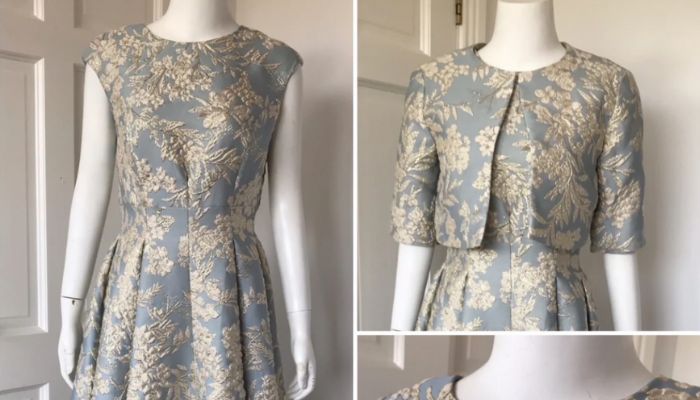Brocade, a richly decorative fabric, is often associated with opulence and elegance. Known for its intricate and raised patterns, brocade is a textile that has been valued throughout history for its beauty and complexity.
| Fiber Source | Traditionally silk; also includes cotton, rayon, polyester |
| Weaving Patterns | Intricate designs woven into the fabric, often on Jacquard looms |
| Dominant Colors | Wide range, often includes metallic threads for luster |
| Texture Spectrum | Thick, heavy, with a raised pattern giving an embossed feel |
| Breathability Index | Moderate, dependent on the base fabric |
| Strength & Longevity | Durable, especially in silk and synthetic blends |
| Maintenance Needs | Typically requires dry cleaning, especially silk varieties |
| Primary Applications | Luxury apparel, upholstery, draperies, religious garments |
| Ecological Impact | Silk is eco-friendly; synthetic variants have higher impact |
| Major Exporters | China is a major producer, especially for silk brocade |
| Comparable Fabrics | Similar to other luxurious fabrics like damask and velvet |
It is typically made using a variety of materials including silk, cotton, and sometimes with the incorporation of gold or silver threads. The process of creating brocade involves a complex weaving technique, where patterns are woven directly into the fabric, often using a Jacquard loom.
1. Characteristics
Brocade fabric is distinguished by its raised, embossed-like patterns, which can range from floral to geometric designs. The fabric often has a glossy, reflective quality, making it visually striking. It can feel quite luxurious to the touch, thanks to its rich texture and often silk-based composition.
Innovations in brocade fabrication have led to the development of silver-incorporated Song Brocade fabrics. These fabrics not only retain traditional aesthetic appeal but also offer enhanced electromagnetic shielding effectiveness and UV protection, showcasing a blend of heritage and modern functionality
2. Uses of Brocade in Fashion and Decor
Brocade has long been a choice for high-end fashion and luxurious home decor. Its use spans from traditional garments like dresses and jackets to decorative items like upholstery, curtains, and pillow covers.

In fashion, silk brocade is particularly prized for creating elegant dresses and formal wear, often seen in bridal and evening gowns. And, for home interiors, brocade adds a touch of luxury and is used in upholstery, drapery, and accent pieces.
3. Brocade vs. Jacquard
While often confused, the main difference between brocade and jacquard lies in their production. Jacquard refers to a type of loom or weaving process that can create various fabrics, including brocade. Brocade specifically refers to the fabric characterized by its raised designs.
Recent studies have focused on producing brocade with electromagnetic interference (EMI) shielding capabilities, using silver-plated yarns. These advancements not only preserve the fabric’s intricate patterns but also enhance its functionality, offering protection against NFC and UV light while maintaining breathability
4. Virtual Fabric in Brocade Switches
In technology, particularly in network switches, the term ‘brocade’ is also used metaphorically to describe complex networks. Virtual fabric in brocade switches refers to the segmentation of a physical network into multiple, separate virtual networks.
The art of brocade weaving in Iran has been celebrated from ancient times, particularly flourishing during the Safavid Age. This tradition has influenced brocade styles across the Malay Peninsula, highlighting a rich history of cultural exchange and the enduring global significance of brocade textiles
5. Conclusion
Brocade remains a symbol of luxury and elegance in the world of textiles. Its intricate patterns and rich texture make it a sought-after material for both fashion and home decor.
While brocade may require careful handling and is generally more expensive than simpler fabrics, its unique aesthetic appeal and enduring charm make it a timeless choice in the world of fine textiles.
